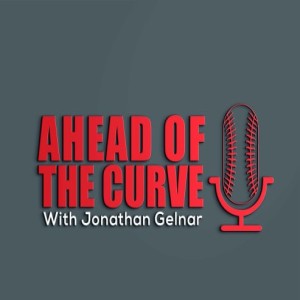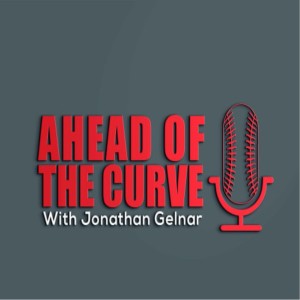
iTunes
Stitcher
Google
Spotify
Ari Ronick Minor League Pitching Coach for the Seattle Mariners. Ari has a doctor of physical therapy and a masters of business administration from the University of Montana. On the show Ari discusses how to tackle mobility challenges, addressing player movement, resources that can help with the movement screening process, and ways to shape progress in pitching development.
Episode Highlights:
What are the key reasons that Ari Ronick became a baseball coach?
What does his pitching development look like?
How does Ari address mobility challenges?
What are common problems that Ari sees, and how can we fix them?
What are things that pop out to Ari Ronick when he looks at a video?
Does he start with lower body when addressing player movement?
How does Ari handle customizing individual player development in a team setting?
What are great ways to go about teaching players new pitches?
What is his postseason routine like?
How do you prepare players in between starts?
What things has he recently learned?
How often does his pitchers know what their strengths are?
What is something that his players love to do in practice?
What are his thoughts on the long toss and weighted balls?
What would we notice during Ari’s practices that he typically does?
Which resources have been helpful to Ari?
3 Key Points:
Find some objectives that you can improve in that can be tracked.
FMS (Functional Movement Screen) and OnBaseU can help with the movement screening process.
Physical stress theory means that demands that are put on the body lead to adaptations.
Tweetable Quotes:
“I grew up in a family where I was the youngest of three boys. It was a baseball household. We were playing all the time as a kid. I played through highschool, through college and as long as I could professionally.” – Ari Ronick (00:28)
“Coaching, it allows me to use two skillsets, to see pitching through the lens of a player, someone who pitched, and as a physical therapist.” – Ari Ronick (01:23)
“Everyday I get to breakdown human movement. I get to watch how people throw. In physical therapy, our mission is to optimize movement to improve the human experience.” – Ari Ronick (01:35)
“I’m going to start by looking at a range of motion. I’m going to look at strength. I’m going to look at a quick movement screen.” – Ari Ronick (04:24)
“What we are ultimately looking for here is, are they able to throw in a way that leads to a favorable pitch? Whether that be velocity movement, command, whatever it happens to be. Do these translate to a change on the baseball field?” – Ari Ronick (07:19)
“A good place to start is always with using strengthening, either or gain length, or to add the muscle that you might need to even get to that position as a player.” – Ari Ronick (09:35)
“What I find with pitching videos is we just want to make everything so perfect that we lose track that the body is pretty complicated. It’s a complex movement and players are going to move in the way that they most efficiently can often times.” – Ari Ronick (11:31)
“This past season I’ve spent a lot of time learning about pitch characteristics and how that can relate to in-game strategy.” – Ari Ronick (27:05)
Resources Mentioned:
Ahead of the Curve Podcast
Twitter: @AOTC_podcast
Ari Ronick: Linkedin
Ronick Baseball Academy: ronickbaseballacademy.com
Learn more about your ad choices. Visit megaphone.fm/adchoices
view more
More Episodes
Chan Brown- Head Baseball Coach, Parkview HS (GA)
 2019-02-28
2019-02-28
 84
84
 2019-02-28
2019-02-28
 84
84
Max Weiner- MiLB Pitching Coordinator, Seattle Mariners
 2019-02-07
2019-02-07
 152
152
 2019-02-07
2019-02-07
 152
152
Brad Gore- Head Baseball Coach, Enid HS (OK)
 2019-01-31
2019-01-31
 41
41
 2019-01-31
2019-01-31
 41
41
Pat Bailey- Head Baseball Coach, Oregon State University
 2019-01-24
2019-01-24
 31
31
 2019-01-24
2019-01-24
 31
31
Steve Roof- Head Baseball Coach, Madison Central HS (KY)
 2019-01-17
2019-01-17
 56
56
 2019-01-17
2019-01-17
 56
56
Steve Johnson- Founder/CEO of LegKickNation
 2019-01-10
2019-01-10
 53
53
 2019-01-10
2019-01-10
 53
53
Tom Walter- Head Baseball Coach, Wake Forest University
 2018-12-14
2018-12-14
 29
29
 2018-12-14
2018-12-14
 29
29
Paul Mainieri- Head Baseball Coach, LSU
 2018-12-10
2018-12-10
 24
24
 2018-12-10
2018-12-10
 24
24
012345678910111213141516171819
Create your
podcast in
minutes
- Full-featured podcast site
- Unlimited storage and bandwidth
- Comprehensive podcast stats
- Distribute to Apple Podcasts, Spotify, and more
- Make money with your podcast
It is Free
- Privacy Policy
- Cookie Policy
- Terms of Use
- Consent Preferences
- Copyright © 2015-2024 Podbean.com






